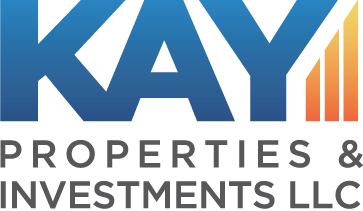By: Matt McFarland, Senior Vice President, Kay Properties and Investments
Any investor who is considering selling a piece of investment real estate will undoubtedly consider a 1031 Exchange.
A 1031 Exchange refers to the IRS code that allows significant tax advantages for investors. How? When you sell an investment property and you have a profit, you normally are required to pay capital gains tax. A 1031 Exchange allows you to sell your investment real estate and reinvest the proceeds in a “like-kind” property, which defers any capital gains and other related taxes. This doesn’t mean you are eliminating any of these taxes, rather you are able to defer them until a later date.
However, any investor who has completed a 1031 exchange knows that one of the biggest hurdles to clear is the many time constraints and tight closing windows the IRS imposes when it comes to like-kind exchange investing. The entire 1031 Exchange process must be completed within 180 days. The clock starts ticking day one after your relinquished property is sold and the funds are escrowed with Qualified Intermediary (QI). On a side note, it is essential you never hold the proceeds from the sale outside of a QI. If you touch the funds at any time during the process, you eliminate your eligibility for a 1031 exchange and you have to pay all of the capital gains and other related taxes.
As an expert 1031 Exchange professional, I can tell you that it is the initial 45-day identification period that causes the most stress, as an investor is required to formally identify the property or properties, they intend to purchase within a matter of about 6 weeks. More specifically, in order to avoid any tax liability, you must identify a property or properties that are of equal or greater value than the relinquished property. You can identify up to 3 separate properties with no regard to their value (3 property rule), or you can identify an unlimited number of properties that do not exceed more than 200% of the value of the relinquished property (200% rule).
Here’s a quick summary of the 1031 Exchange rules investors should keep in mind when considering selling a piece of investment property:
- Entire 1031 Exchange process must be completed within 180 days
- Day 1 – Sell your property; proceeds are escrowed with a Qualified Intermediary (QI)
- Day 45 – Identify a property(s); you must notify your QI of the identified property(s)
- Day 180 – Close on new property; you must close within 180 days after the first sale
- Maintain equal or greater amount of equity
- Maintain equal or greater amount of debt
Plan Ahead to Reduce the 45-Day Identification Stress
One of the best ways to mitigate the stress of this short time window is to begin searching and selecting potential like-kind properties before you officially close on your relinquished property and the 45-day time clock starts ticking.
When it comes to Delaware Statutory Trust properties, the underlying real estate that is a part of a particular offering is acquired and owned by the trust before it is ever accessible to 1031 exchange investors to consider as an option. This “pre-packaged” element of DSTs affords investors who are in the process of a 1031 Exchange the luxury of a quick and seamless close of their purchase of a DST property.
Another great benefit of DSTs for 1031 Exchange investors is that they can make a great back-up or contingency plan. Real estate deals fall apart all the time, and if your replacement property in a 1031 Exchange falls apart for any number of reasons, you could be in a tight spot. Using a DST as an “identified” property makes a great contingency plan if your initial deal does fall through.
However, it is important to remember that even though the Real Estate Sponsor Company has completed their due diligence and acquired a particular property for one of their DSTs does not mitigate the need for an investor to conduct their own due diligence on the various DSTs.
Make sure to look at current DST properties offered on the www.kpi1031.com marketplace.
All 1031 exchange investors, with the help of their Kay Properties’ Registered Representative, will assess the various opportunities to ascertain the best potential solution for their particular situation and/or circumstance.
When is the Best Time to Start the DST Selection Process?
In most cases, the most opportune time to begin the screening process is about 30 days before you are scheduled to close on your relinquished or downleg property. The reason for this is simple – DST investments have a finite shelf life or a limited time in which they are ‘open’ for investment. DST offerings are capped at a specific value and as soon as the last dollar is invested, that particular DST offering is no longer available for further investment.
In my experience, DST offerings are typically available for purchase for about 1-3 months. In many cases, it would be an improper allocation of one’s time to begin the selection process 3-6 months out, as most of the opportunities considered will be sold out by the time they have the capital to invest as part of their 1031 exchange. Within 30 days, many of the opportunities will likely be viable options for one to consider as reservation can be made for one’s allocation. In a perfect scenario, an investor has decided exactly which DSTs they are purchasing before they close on their relinquished property. This grants them the ability to quickly close on their DST investments as soon as the funds from the sale become available and successfully complete their 1031 exchange just a few days into their 45-day identification period.
Keeping these points in mind should not only greatly mitigate most of the stress associated with a 1031 exchange, they will also help you to potentially begin accruing cash flow immediately from their investments (a luxury afforded through the quick and seamless purchase of a DST relative to a traditional real estate transaction, which may stretch on for months).
For more information on the 1031 exchange and DST selection process, please reach out to your Kay Properties Registered Representative or visit www.kpi1031.com for more resources.

